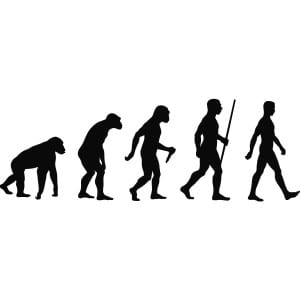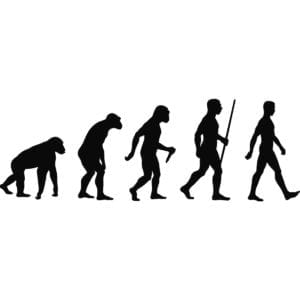Branding Goes Social: The Evolution of Brand Marketing

 There used to be a more definitive line drawn between “Marketing” and “Branding.” For example, some have argued in the recent past that Branding defines who you are, while marketing is a term used to describe what you do. While research suggests that to a certain extent people will defend their favourite brands when they run into PR trouble, I would contend that more than ever how a brand lives and breathes online in real-time has a significant impact on how people come to identify with it (need examples?). But of course, things were not always this way.
There used to be a more definitive line drawn between “Marketing” and “Branding.” For example, some have argued in the recent past that Branding defines who you are, while marketing is a term used to describe what you do. While research suggests that to a certain extent people will defend their favourite brands when they run into PR trouble, I would contend that more than ever how a brand lives and breathes online in real-time has a significant impact on how people come to identify with it (need examples?). But of course, things were not always this way.
Where Does Branding Come From?
Unless you live on a cattle ranch, you probably don’t ascribe “branding” with hot irons anymore. To the surprise of most, the “branding” that we do relate to advertising, labelling, and other activities that develop and uphold a corporate image existed long before cattle ranching was brought to North America by the Spanish Conquistadors in the 16th century. In fact, the Advertising Educational Foundation (AEF) describes the earliest days of branding beginning in ancient Babylon.
Brand Marketing in Ancient Babylon
As goods arrived on ships barkers solicited customers by yelling out their sales pitch. “Announcements written on papyrus were posted in ancient Egypt for a variety of reasons, including lost items and rewards for runaway slaves. To explain their offerings and goods to a mostly illiterate mass—as early as ancient Egypt, Greece, and Rome—merchants hung pictorial signs (using symbols and pictures) and painted their storefronts. Writing was also used to advertise, as evidenced by writing on walls from the ancient city of Pompeii.”
Ouch! Brand Marketing Goes Medieval
Much like every other area of human and social development the medieval times were a period of decline for commerce, and the unfortunate advent of the term “branding” that came to represent the practice of inflicting pain and torture as an accepted form of punishment or interrogation. It wasn’t until the fall of feudalism that commerce began to improve as trade between East and West increased significantly.
The Song Dynasty and the Printing Press, Paper Currency & Billboards
While the west relapsed into barbarism, the Chinese were in the midst of their most prolific periods of growth: the Song Dynasty. Movable type, the abacus, and fire crackers were invented during this time. And while the Chinese were not celebrating their achievements they were spending their newly minted paper currency –also the first of its kind. Shoppers were treated with much more fanfare than their western counterparts with printed wrappers, banners, painted lanterns, and painted pictures and signboards. Imagine Times Square without the electronics.
The Commercial Revolution and Industrial Revolution
But the West would not be undone, once returning to their senses. Soon the Renaissance would give way to the Commercial Revolution. This era began around 1600A.D. and ushered in modern capitalism along with establishing all of the necessary institutions to expand and conquer the world. With the King of England ceding control of the nation’s affairs to its people civilization began to flourish, producing many of the modern inventions that would pave the road to the industrial revolution and eventually mass production.
The Emergence of the Consumer Mass Market & the Madmen Era of Marketing
Along came a little known marketing pioneer in the turn of the 20th century. The man’s name was Albert Lasker, and he was one of the seminal movers behind the development of the consumer mass market. Facing a poor market for their citrus fruits the California Citrus Growers hired Lasker’s marketing firm to help them improve their profitability. Lasker proposed that all of the roughly 2000 growers subordinate their separate brand to one single, unified brand: Sunkist. Lasker also used a number of sales gimmicks which included a promotion involving spoons, and the new revolutionary product, Orange Juice. In the wake of Albert Lasker’s illustrious career he left another brand still known to this day, “Sunmaid.” By the 1950’s and 60’s, radios and then televisions filled homes across America. And the rest is history: Sales jingles, door to door salesmen, rolodexes, and cold-calling. Until of course, the arrival of the Information Age.
Modern Brand Marketing and the Speed of Change
While one may argue that the fundamental principles of marketing and advertising have remained the same, (check out this infographic), how we go about communicating with the public has changed considerably –to say the least. And with the instantaneous nature of how information is spread online, social media is having a bigger impact on brand marketing strategy. Seth Godin; one of the best known authors on the subject, goes as far as to state that marketing has changed more in the last 20 years than any other business discipline including accounting, manufacturing, or management in general. As a result, more than ever students of marketing are graduating only to find that as much as they might like to “take a break from studying” the speed of technology and information change necessitates that marketers stay up to date through a commitment to life-long learning.

Ryan, thanks for the post. I’m 100% with you on life-long learning, and I love that you included the Song Chinese in your sweep of brand history. I do, however, hold firm on the usefulness of not mushing branding and marketing together. In my current understanding, branding originates and is cultivated primarily through the lived experience of a product or service, and it is maintained in the mind of the consumer. Marketing, on the other hand, originates with the needs of the consumer, or an understanding thereof, and it lives in the interface or overlap between these needs and their satisfaction through the brand offer. For me, this basic relationsip is not fundamentally altered by speed or technology (provided both sides
stick with the truth).
Thanks again for the post.
James
Hi James,
Thanks for your thoughtful comment.
I appreciate your distinction between the marketing and branding. “The basic relationship is not fundamentally altered by speed of technology (provided both sides stick with the truth),” -do you believe this to be the case the majority of the time? I would say, no. And perhaps the modern era of marketing might be responsible for unearthing brand lies. What do you think?
Thank you again for insight!